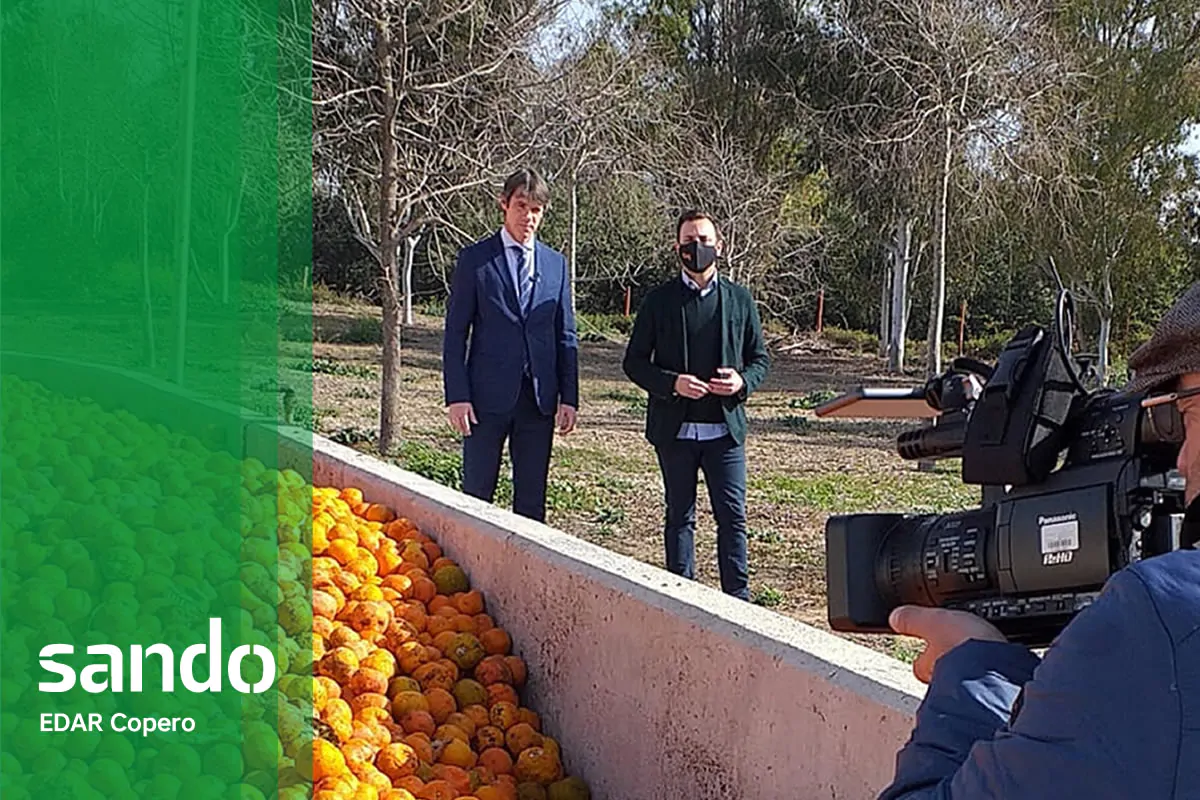
14/03/2022
Seville has around 50,000 orange trees, more than any city in Europe. Sando is involved in a circular economy project to convert bitter oranges from public Roads into biogas in a co-digestion process. The recovery of oranges from public roads is an example of a circular economy. Its management involves gas production and electricity generation in the most energy-intensive process in the urban water cycle (wastewater treatment).
This initiative, tested for several years at the Emasesa municipal corporation Copero wastewater treatment plant (WWTP) in Seville, uses the juice extracted from oranges to generate electricity through biogas. During the process, the peel is separated from the fruit juice. The extracted liquid ferments, producing methane, which will be used to generate energy. The organic remains of the oranges are composted, closing the carbon cycle and returning it to the soil.
The main objective of this initiative is to achieve energy self-sufficiency in wastewater treatment plants through a commitment to the circular economy. Sando’s Infrastructure Conservation and Maintenance area, as the management agency of the Copero WWTP in a temporary joint venture, is part of this project, which aims to transform the 1,700 tonnes of oranges, around 45 kg per tree, collected by Seville’s roads over a year, into the equivalent energy to supply more than 7,300 homes.
In 2019, Sando became the first Andalusian company to be awarded the ISO 50001 certificate from Aenor for implementing an Energy Management System at the Copero WWTP. Purification processes account for most of the energy consumption in the urban water cycle, so the ISO 50001 certificate recognises Sando’s commitment to efficient, sustainable use and continuous improvement in its management. Thanks to this certification and projects such as co-digestion with the use of oranges, there are real and quantifiable savings in energy costs. A pilot test has been carried out at the Copero WWTP with 35 tonnes of oranges, which will generate approximately 1,500 kWh, equivalent to the consumption of 150 homes for one day.